About the Astronomical Role of “Qarahunge” Monument by Vachagan Vahradyan, Marine Vahradyan
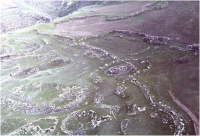 The already well known megalithic construction situated not far from the town of Sisian, Syunik province, Republic of Armenia, is mysterious in all its manifestations. Its structure, functional significance are mysterious and are subject to many disputes, up till recently mysterious and disputed was even its name…
The already well known megalithic construction situated not far from the town of Sisian, Syunik province, Republic of Armenia, is mysterious in all its manifestations. Its structure, functional significance are mysterious and are subject to many disputes, up till recently mysterious and disputed was even its name…
As far as the latter, the name of the construction goes, seemingly here an end has been put to disputes. The ancient Armenian name of similar constructions has been proved to be Qarahunge and there are at least several such constructions in the current territory of the Republic of Armenia. The name Anghi Qarahunge (Vulture Qarahunge) has been suggested as a special name for the construction under survey [1].
In this article we will cover one of the main significant functions of the construction – the astronomical one.
To give a complete picture of the functional significance of the construction, we will present its main structural peculiarities in short, in accordance with the structure-functional unity principle. So:

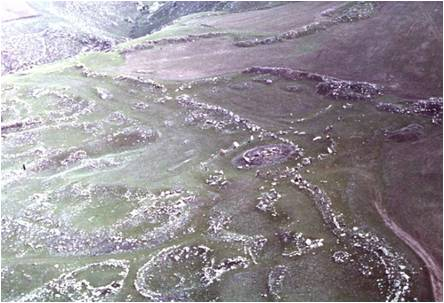
Picture 1. Angghi Qarahunge view from a helicopter
• The monument is situated in a plateau at an altitude of about 1770 meters from the sea level and spreads on a territorial area of approximately 70,000 m2 (pic. 1).
• The construction counts 223 stones (according to research by Paris Heruni [2]), with huge stones foreseen to stand vertically mostly.
• Evidently, the stones are constructed ovally at the center.
• Stone ranges of different shapes and measures stretch from the center to the north and the south. The stones are 0,5-3 m tall.
• There are about half-a-meter-tall stones placed in circles of different diameters.

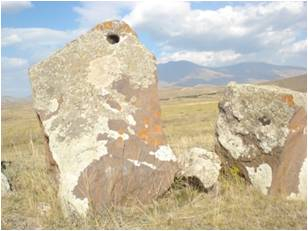

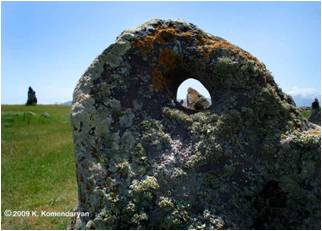
Picture 2. The holes are directed to definite points of the sky and they make a target system.
• There are rectangular holes similar to the central dolmen, though these are of smaller sizes.
• Some stones have 6-8 cm-diameter holes directed to different points of the sky (pic. 2). The holes are made from both sides of the stones and they get narrower and narrower until they intersect. This makes this construction different from all the other similar megalithic constructions existing in the world.

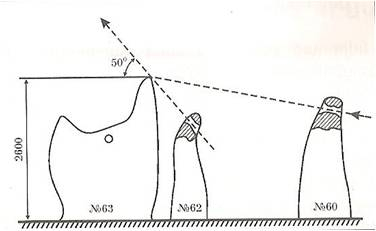
Picture 3. This group of stones is viewed as an astronomical tool.
• When jointly studied, some groups of stones make a target system in terms of their allocation or at least remind of one (pic. 2).
• Academician Heruni has observed the following stone group during the research he carried out. (pic. 3) [2].
• The stones ovally located at the center have no holes.

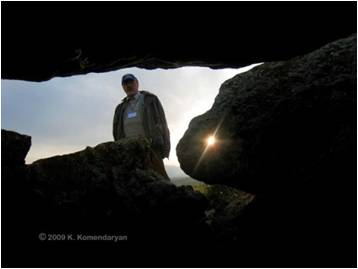
Picture 4. Was taken on 22.06.2009 from inside the hole at the sunrise.
• At the center of this stone group there is a big rectangular pit. From inside, the pit is covered with pieces of stones. From above, the pit had been covered with flagstones. Now some of them have fallen into the pit.
• There is a huge stone to the east from the pit, with a hole at the edge. The hole is directed to the very point of the horizon from where the sun rises on the summer solstice day. This is the only stone with a hole in the center. (pic. 4).
• About 50 meters to the north-west from the central oval stone group, one can find the second largest pit (5x10 m) with a huge stone lying on its western side. This is the 200th stone and it had been foreseen to be standing vertically. (pic. 5a.).

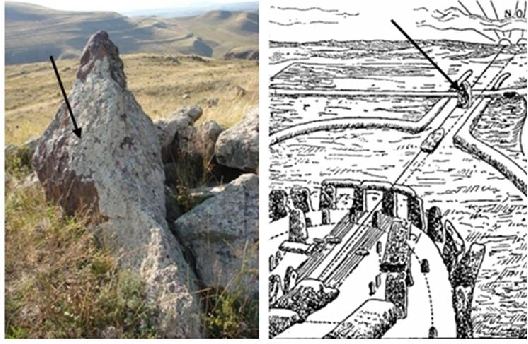
Picture 5a. The arrow points at the 200th stone.
Picture 5b. The arrow points at the heel stone of the Stonehenge.
As to why the stone had been located in this very place none could explain. It had been alleged that this could have the same role and significance as the heel stone of the British Stonehenge. [2] According to Hawkins, this very heel stone can help you find out the day of the summer solstice. (pic. 5b.) [3]. However, the mentioned stone of Qarahunge is situated to the north-west from the central oval construction and it could in no way serve for the same role. Later we will refer to the role of this stone as per our version.
• At the brink of these and other pits situated were specially hacked, quite huge stones (some of them are missing, some of them are still in their places). Grouped together the stones make a half-roof (pic. 6a.). The scheme can be viewed in picture 6b.

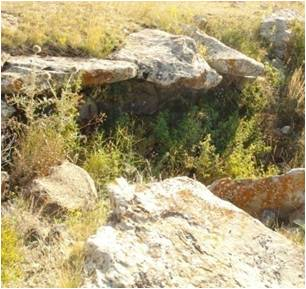
Picture 6a. Stones making a half-roof on one of the pits

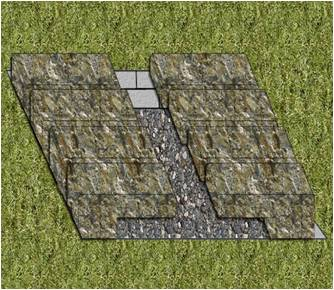
Picture 6b. The scheme of the pits
• One can see also traces of destroyed walls.
The abovementioned has been presented in details to help make an idea about the functional role of the construction.
Some Armenian archaeologists are inclined to thinking this is a cemetery field, note however, they have no basis which can prove this version. Half-roofed pits covered with flagstones from inside are viewed as cemeteries. As a rule, the flagstones are missing or they can be seen fallen into the cemetery pits, Onik Khnkiyan writes [4]. However, the detailed survey showed that there are no flagstones (preserved or at least half-preserved) and, actually, they have never been. We assume this since it had been no difficulty to get into the pits (for robbers, let`s say) and practically, it would be senseless to destroy and take away all the stones. The disappearance of the stones missing from the places they are supposed to have once been, could not have been caused by earthquakes either, since one can neither find them in the pit where they could have found shelter providing such a disaster had occurred (pic. 6b.).
Consequently, we get to be inclined to thinking the pits with specific roofs have had quite another functional role.
Hypothesis: These could have served as observatories and a person sitting inside could observe some little part of the sky. In this very part they could see this or that constellation and, thus, make conclusions about the calendar.
Anyway, this version also needs precision.
We should note that it was Onik Khnkiyan who first wrote about the possible astronomical role of the construction [4]. He expressed disagreement over the existing version as if the only role of the construction was serve as a cemetery. Basing on the holes made on the stones with those being directed to specific points of the sky, he introduced the version on the possible astronomical role of the monument. Khnkiyan was also first to try to decide on the exact age of the construction, claiming it to be 4000 ± 200 years.
However, the ethnologists K. Kushnaryova and St. Lisitsyan tried to explain that the holes had served for technological purpose. According to them, the holes were made to tie them with ropes so that these could be carried with the help of animals [7]. Khnkiyan slammed this version as well [4]. Despite this, the majority of archaeologists still stick to this incomplete view. Some archaeologists think, the holes were made to tie horses. Even the fact the holes were made two meters high and made some angles above the horizon did in no way make them change their view.
The arrangement of some stones and the possibility to precisely decide the sides of the earth through the sunrise of vernal and autumnal equinox was discovered by astrologist E. Parsamyan in 1985 and, thus, he also supported the hypothesis on the astronomical role of the construction [5].
Academician Paris Heruni got interested in the construction in 1990ies. He headed several expeditions (including ones with participation of foreign scientists) during which the coordinates of the main stones of the monument have been specified, the stones have been numbered and classified, as well as they measured the angles of the holes on the stones which they made above the horizon. Through, astrological methods they have calculated the possible age of the monument – about 7500 years.

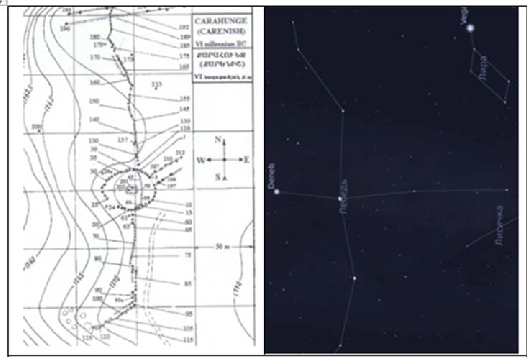
Picture 7. The scheme of Vulture Qarahunge monument According to acad. Heruni (on the left), it repeats the scheme of Cygnus (Vulture) constellations (on the right). Stellarium used.
Studying the joint arrangement of some stones, several astronomical hypotheses have been put forward. According to one of the hypothesis, the monument has also been used as an educational center.
We launched the survey of the monument in 2006. What first captured our attention, was the unusual construction of the stones. It is a construction with asymmetric wings stretching to the north and the south from the central oval stone range.
We tried to check whether the amazing and specific architecture of the monument actually reflects the arrangement of the stars in the sky. As we could notice, the stars of the Cygnus (the Swan-Vulture) constellation have the same asymmetric arrangement. Comparison allowed us to put forward a hypothesis which proved to be very efficient for further survey (pic. 7).
Hypothesis: The architecture of Qarahunge monument reflects the arrangement of the stars of Cygnus (the Swan-Vulture) constellation (ancient Armenian name Vulture).
The stones of the monument which coincide with the stars of Cygnus (Vulture) constellation, are placed on a pedestal and can be moved. All the other stones are half-buried into the soil. Here we should mention that the 200th stone overlaps with Alfa (Deneb) of Cygnus (Vulture) constellation. This comes to prove that when constructing Qarahunge the constructors of the monument already knew the sky is divided into star constellations. That is to say, they had good astronomical skills. The general construction of the monument allows to make several astronomical observations. These include:
• Decide the day of the summer solstice. This is proved by the existence of the corridor to the north-east from the central oval construction. According to the

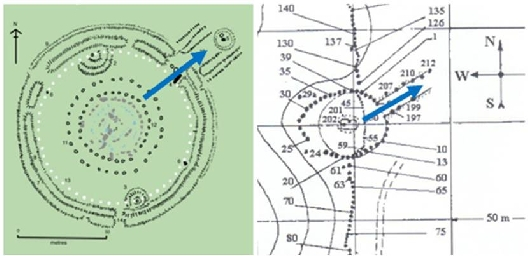
Picture 8. Both monuments have corridors directed to the north-east. And these allowed to decide the summer solstice day in the past.

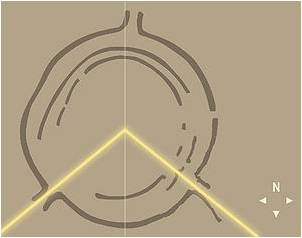
Picture 9. The scheme of Goseck construction calculations made by academician Heruni, it was in this very corridor where the sun rose on the day of the summer solstice 7500 years ago [2]. Now the sunrise point has changed due to the earth procession. The same is also true for the Stonehenge. The similarity of astronomical skills of the constructors of both monuments and that of the ritual-religious traditions is indeed remarkable (pic.8).

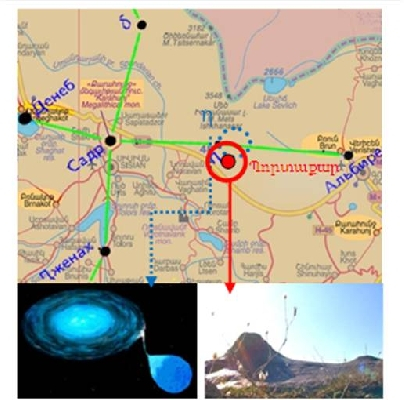
Picture 10. Angeghakot village coincides with Deneb, the monument – with the central star Sadr. Brun village overlaps with the second brightest star Albireo, the ritual site Portasar with h star. h Cygni (from the left) is a double star. One of them is essentially bigger, the other one is smaller in dimension. The double-top structure of Portaqar actually repeats the double nature of h star.
Let’s bring the round, 75-meter-diameter wooden construction found in Goseck (Germany) as a proof of another kind of approach. The age of the construction counts 6000 years and according to German archaeologists, it used to have an astrological role [6]. The yellow lines on picture 9 illustrate the directions of the sunrise and the sunset on the winter solstice day.
• Follow the motion of stars. There are some holes made on a number of stones a few of which are directed to certain points of the sky, the rest with their adjacent stone constitutes a target system (pic. 2). It obviously gives us some reason to think that when any luminary appeared on the top of the mentioned stone it allowed to make inferences about time.
The Angghi qarahunge monument has special astronomical-geographical features. The geographical position of the structure is correlated with the sanctuary-cemetery in Angeghakot village, the ancient church of the villages Brun-Verishen (at the place of the former heathen temple), and the ritual site called “Portaqar” in such a way that the set reflects on the Earth the main “vertical” line of the stars constituting the cross of the Cygnus (Vulture) constellation (pic. 10).
The abovementioned correlation is also expressed in the names of the mentioned points on Earth. Thus,
• The name of Angeghakot village signifies “Vulture's big” and corresponds to Deneb, the brightest star of the Vulture (Cygnus) constellation.
• The village of Brun corresponds to b Cygni, the star Albireo. Though the word sounds Arabic, its root ‘bireo’ is not of Arabic origin. The correspondence is evident – Al-Bir-eo, where ‘eo’ is obviously a suffix.

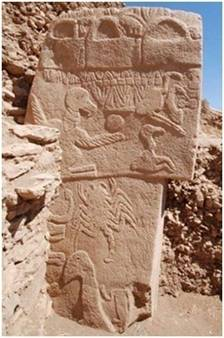
Picture 11. In the centre of the famous stone of Portasar near the image of vulture an egg is carved. We suppose a fragment of the starry sky is depicted on this stone. We’ll illustrate that later.
• The central star called Sadr corresponds to the monument itself. The word ‘Sadr’ in Arabic means chest of a bird. It is related to the oval structure located in the centre of the monument indicating the worship of egg in ancient times. The latter is also supported by the evidence that in sanctuary Portasar (mostly known by its turkified name Gobekli tepe) situated at the other end of the Armenian plateau one can see an image of vulture next to which in the centre of the whole image an egg is carved (pic. 11). We'll revert to this stone later.
• As regards the correspondence between the ritual site called “Portaqar” and h Cygni, at a first glance it has merely a structural nature (pic. 10.): However, a more thorough observation gave an unexpected result. In case we compare the Cygnus constellation with the image of vulture in Portasar (pic. 15.a), h star will overlap with the abdomen of the bird. In most Indo-European languages, particularly in Romance-Germanic and Slavonic languages, the second meaning of the word “port” is linked with the stomach of a bird. Thus, presumably the name of “Portaqar” has some kind of connection with the correspondence between h star and the stomach of the vulture. We’ll discuss this correspondence later.

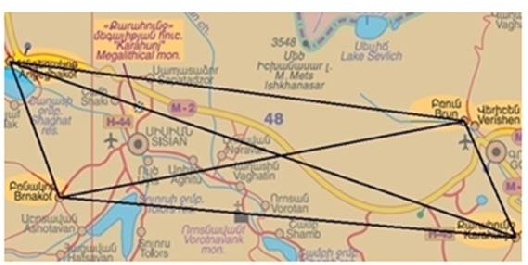
Picture 12. The parallelogram of Angeghakot, Brun, Qarahunge and Brnakot.
If we draw straight lines between the four villages of Angeghakot, Brun, Qarahunge and Brnakot having semantic or other kinds of similarities on a map, we'll get a nearly accurate parallelogram. On the big diagonal of the latter the Vulture Qarahunge monument is located, dividing the diagonal into ¼ and ¾ parts (pic. 12.).
And at the point at which the diagonals of a parallelogram intersect there is a tomb field. This amazing parallelogram still lacks an explanation.

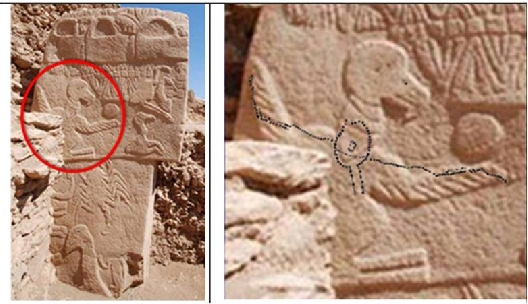
Picture 13. The image taken into a circle is a vulture. In case we place on it the outline of the ‘Vulture Qarahunge’, it will entirely overlap with the image of the vulture.
The relation between the “Vulture Qarahunge” monument and the monument of Portasar in Western Armenia has been revealed (pic. 13.): This stone is covered with more carvings. The image taken into a circle is obviously a vulture. If we place on it the outline of the “Vulture Qarahunge”, it will entirely overlap with the image of the vulture.

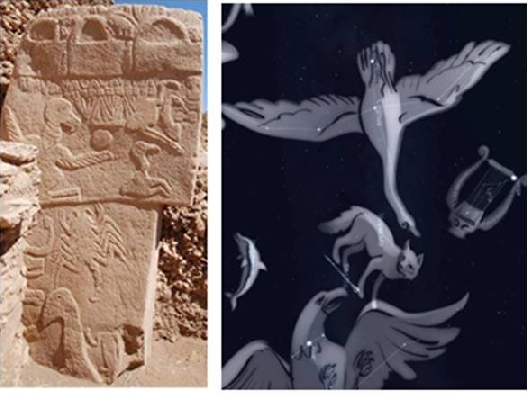
Picture 14. The starry sky is depicted on this stone divided into constellations. To the right it is the part of the sky we are interested in, which we received via STELLARIUM program.
It is illustrated that on this stone of the monument of Portasar the starry sky divided into constellations is depicted around the Cygnus constellation (pic. 14). Since it is known that the Cygnus constellation in ancient Armenia and in Sumer was also called the Vulture constellation, it is evident that the vulture carved on the stone represents the constellation Vulture (Cygnus, the Swan). There is a little bird to the right of the vulture. In our opinion it corresponds to the small Lyra constellation located to the right of the Cygnus. Most probably the latter had another name in the past. Below the Cygnus the constellation Vulpecula (the Fox) is located and below the vulture a fox is depicted in an unnatural vertical position on the stone. To the right and below the Vulpecula we have the rather big Aquila (the Eagle) constellation and at the same place on the stone a big eagle is carved. It means that in the Armenian plateau the starry sky was divided into constellations still 12 thousand years ago, according to Schmidt’s chronology.
There are also some discrepancies. For instance, among the Cygnus, Aquila, Vulpecula and Lyra constellations in a free space a scorpio is depicted. It is accounted for by the following:
At different periods of the Cygnus constellation different degrees of correlation are observed with the image of Vulture in Portasar. Thus, in our times (pic. 15.a) the correspondence is in general lines and the left wings of both images form a comparatively big angle towards each other. 12000 years ago (that is the age of the structure of Portasar according to archaeologist Schmidt) the angle was getting considerably small (pic. 15.b): And the angle approached zero 18500 years ago (pic. 15.c.): This gives us a ground to suppose that through the animals carved on the abovementioned stone of Portasar a portion of the starry sky is introduced as of 18500 years ago. That corresponds to the beginning of the age of Scorpio and the scorpio itself is depicted in the centre of the composition.

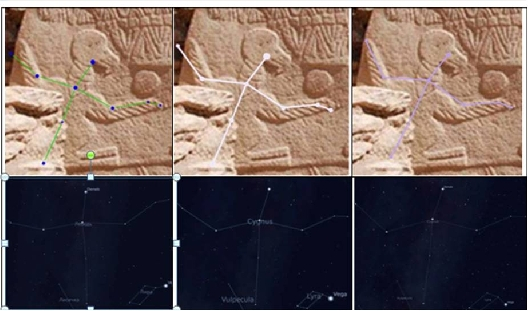
Picture 15.a. The Cygnus constellation in 2010
Picture 15.b. The Cygnus constellation 12000 years ago; the age pointed by Schmidt
Picture 16.c. The Cygnus constellation 18500 years ago in the age of Scorpio
Bibliography
1. V. Vahradyan, M. Vahradyan About the name of Qarahunge monument
2. P. Heruni The Armenians and Ancient Armenia, Yerevan, 2004,
3. G. Hawkins, J.White Stonehenge Decoded, М., Мir, 1984, p.256
4. O.S. Khnkikyan Zorats Karer of Sisian 'Armenia's Nature' Magazine, 1984. #4, pages 33-34
5. E.S.Parsamyan About the possible astrological role of megalithic rings in Angeghakot: collection of scientific articles // Reports of Byurakan Observatory/; ASSR Academy of Sciences. - Yerevan, 1985. - pages 101-103
6. Boser U. Solar Circle //Archaeology Magazine, July/August, 2006
7. S. Lisitsyan The Armenians of Zangezur, Yerevan, ASSR Academy of Sciences, 1969
• ՀՈԴՎԱԾՆԵՐԸ ՄԱՍՆԱԿԻ ԿԱՄ ԱՄԲՈՂՋՈՒԹՅԱՄԲ ԱՐՏԱՏՊԵԼՈՒ ԿԱՄ ՕԳՏԱԳՈՐԾԵԼՈՒ ԴԵՊՔՈՒՄ ՀՂՈՒՄԸ www.anunner.com ԿԱՅՔԻՆ ՊԱՐՏԱԴԻՐ Է :
• ԵԹԵ ԴՈՒՔ ՈՒՆԵՔ ՍՈՒՅՆ ՀՈԴՎԱԾԸ ԼՐԱՑՆՈՂ ՀԱՎԱՍՏԻ ՏԵՂԵԿՈՒԹՅՈՒՆՆԵՐ ԵՎ
ԼՈՒՍԱՆԿԱՐՆԵՐ,ԽՆԴՐՈՒՄ ԵՆՔ ՈՒՂԱՐԿԵԼ ԴՐԱՆՔ info@anunner.com ԷԼ. ՓՈՍՏԻՆ:
• ԵԹԵ ՆԿԱՏԵԼ ԵՔ ՎՐԻՊԱԿ ԿԱՄ ԱՆՀԱՄԱՊԱՏԱՍԽԱՆՈՒԹՅՈՒՆ, ԽՆԴՐՈՒՄ ԵՆՔ ՏԵՂԵԿԱՑՆԵԼ ՄԵԶ` info@anunner.com:
| Կիսվել : |
 15:49
15:49 НАС МАЛО, НО МЫ АРМЯНЕ
(отрывок)
Паруйр Севак
Мало нас, но мы армяне – это знаем.
Превыше никого себя не почитаем.
Просто, давай признаемся мой брат,
Что мы и только мы имеем Арарат.
И что у нас – в голубизне севанских вод
Копию с себя снимает небосвод.
Просто, здесь у нас Давид сражался.
Просто, здесь у нас Нарек писался…
Просто в жизни нашей вековой,
Когда сильны мы были – дух был боевой
Мы никого в рабов не превращали,
И от ударов наших народы не страдали.
Вот книгами мы...
НАС МАЛО, НО МЫ АРМЯНЕ
(отрывок)
Паруйр Севак
Мало нас, но мы армяне – это знаем.
Превыше никого себя не почитаем.
Просто, давай признаемся мой брат,
Что мы и только мы имеем Арарат.
И что у нас – в голубизне севанских вод
Копию с себя снимает небосвод.
Просто, здесь у нас Давид сражался.
Просто, здесь у нас Нарек писался…
Просто в жизни нашей вековой,
Когда сильны мы были – дух был боевой
Мы никого в рабов не превращали,
И от ударов наших народы не страдали.
Вот книгами мы...
 02:28
02:28 - Это сделал твой род, детка. – Сказал мне дед Вардан, сразу же утром, как только он меня увидел во второй день нашего приезда в деревню Мсмна, что в Карабахе.
Я с раннего детства знала деда Вардана. Он часто захаживал к моему прадедушке Аваку. Обычно это бывало под вечер, скорее к темноте. Прабабушка моя Эрикназ, которую мы просто называли бабушкой, знала, зачем он заходит и, потому не спрашивая: «Что вы будете пить, и будете ли ужинать вообще?», всегда молча, накрывала на стол. Обычно, они ...
- Это сделал твой род, детка. – Сказал мне дед Вардан, сразу же утром, как только он меня увидел во второй день нашего приезда в деревню Мсмна, что в Карабахе.
Я с раннего детства знала деда Вардана. Он часто захаживал к моему прадедушке Аваку. Обычно это бывало под вечер, скорее к темноте. Прабабушка моя Эрикназ, которую мы просто называли бабушкой, знала, зачем он заходит и, потому не спрашивая: «Что вы будете пить, и будете ли ужинать вообще?», всегда молча, накрывала на стол. Обычно, они ...
 20:44
20:44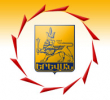 Երևան դարձած իմ Էրեբունի …
Պարույր Սևակ
Մեր քաղաքի անվան ծագումը ժողովրդական բանահյուսությունը կապում է բիբլիական Նոյի հետ: Թերևս, ամեն հայ, դեռ մանուկ հասակից, լսել է այդ զրույցը: Այդ թվում նաև ես: Ինձ հասած պատումը հետևյալն է. ՙԵրբ համաշխարհային ջրհեղեղի ջրերը հետ քաշվեցին և Նոյն իր ընտանիքով իջնում էր Մասիս սարից, նա տեսավ առաջին ցամաքն ու բացականչեց. ՙԵրևաց…՚ Դրանից հետո այդ վայրը կոչվել է Երևան:՚ Քաջ հիշում եմ, որ իմ հարցին թե. ՙՆոյը հայերե՞ն արտասանեց այդ բառը՚, ես հստակ պատասխան չստ...
Երևան դարձած իմ Էրեբունի …
Պարույր Սևակ
Մեր քաղաքի անվան ծագումը ժողովրդական բանահյուսությունը կապում է բիբլիական Նոյի հետ: Թերևս, ամեն հայ, դեռ մանուկ հասակից, լսել է այդ զրույցը: Այդ թվում նաև ես: Ինձ հասած պատումը հետևյալն է. ՙԵրբ համաշխարհային ջրհեղեղի ջրերը հետ քաշվեցին և Նոյն իր ընտանիքով իջնում էր Մասիս սարից, նա տեսավ առաջին ցամաքն ու բացականչեց. ՙԵրևաց…՚ Դրանից հետո այդ վայրը կոչվել է Երևան:՚ Քաջ հիշում եմ, որ իմ հարցին թե. ՙՆոյը հայերե՞ն արտասանեց այդ բառը՚, ես հստակ պատասխան չստ...
 15:25
15:25 Գիտական-աշխարհայացքային հավակնություն ունեցող բանավեճ-քննարկումներում և հրապարակային ելույթներում հաճախ ենք օգտագործում բառեր կամ, գիտական լեզվով ասած, տերմիններ, որոնց նշանակությունը թվում է լիովին ակնհայտ: Իրականության փորձը, սակայն, ցույց է տալիս, որ շատ դեպքերում նման հասկացությունների մասին ինտուիտիվ պատկերացումները անճշտությունների, հակասությունների և թյուրիմացությունների աղբյուր են հանդիսանում: Այդպիսի բառ-հասկացություններից են` ՙԺողովուրդ՚ և ՙԱզգ՚, ՙԱզգային ծագում՚ ՙԱզգային պատկանելությ...
Գիտական-աշխարհայացքային հավակնություն ունեցող բանավեճ-քննարկումներում և հրապարակային ելույթներում հաճախ ենք օգտագործում բառեր կամ, գիտական լեզվով ասած, տերմիններ, որոնց նշանակությունը թվում է լիովին ակնհայտ: Իրականության փորձը, սակայն, ցույց է տալիս, որ շատ դեպքերում նման հասկացությունների մասին ինտուիտիվ պատկերացումները անճշտությունների, հակասությունների և թյուրիմացությունների աղբյուր են հանդիսանում: Այդպիսի բառ-հասկացություններից են` ՙԺողովուրդ՚ և ՙԱզգ՚, ՙԱզգային ծագում՚ ՙԱզգային պատկանելությ...







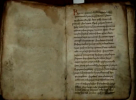







 Arian AMU
Arian AMU
